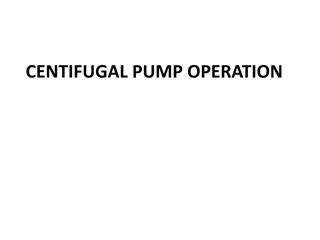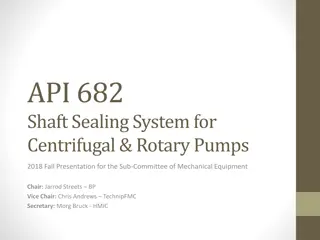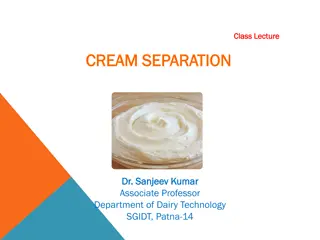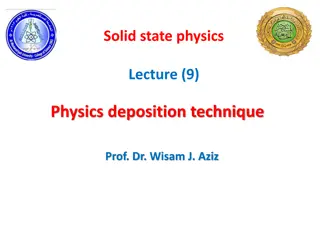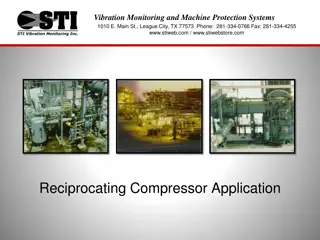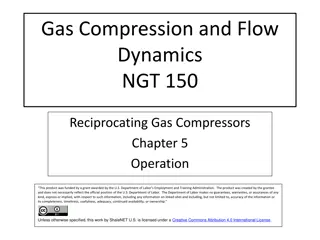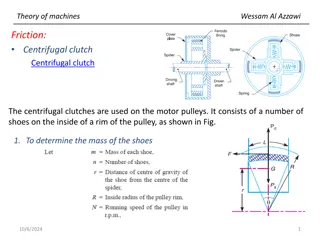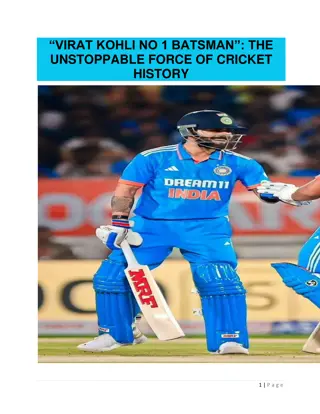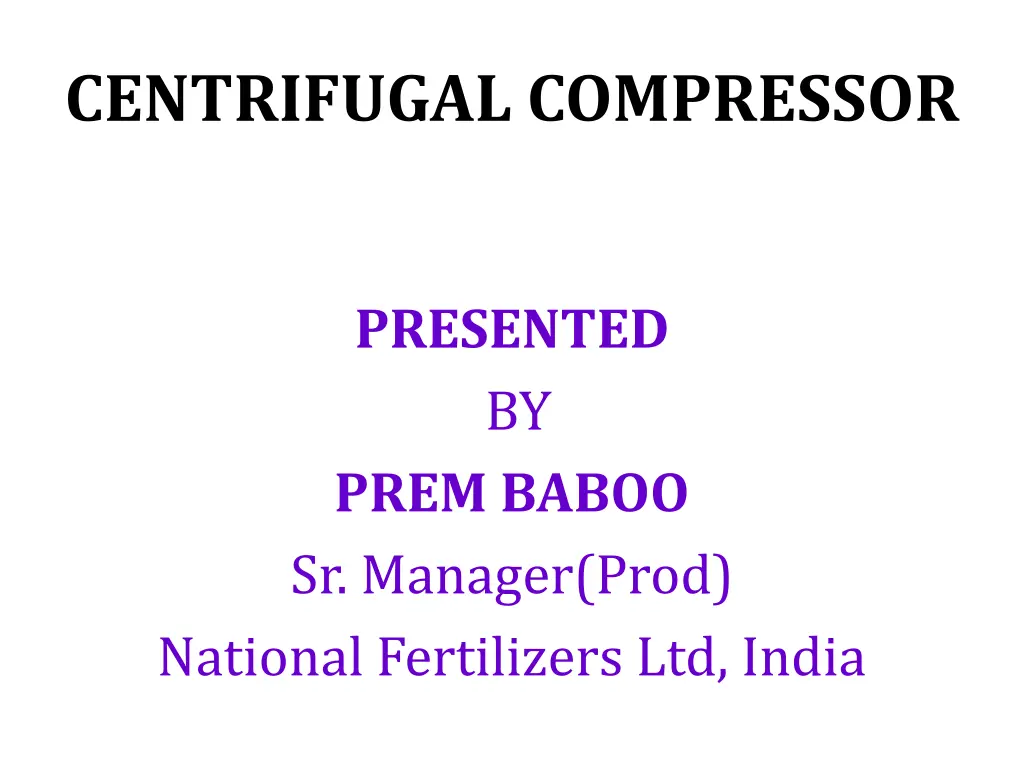
Centrifugal Compressors for Varied Industrial Applications
Learn about MCL and BCL compressors used in urea plants and petrochemical applications. Discover the design features, pressure ratings, and materials used for optimal performance. Explore the different stages and cooling processes involved in compressing CO2 gas.
Download Presentation

Please find below an Image/Link to download the presentation.
The content on the website is provided AS IS for your information and personal use only. It may not be sold, licensed, or shared on other websites without obtaining consent from the author. If you encounter any issues during the download, it is possible that the publisher has removed the file from their server.
You are allowed to download the files provided on this website for personal or commercial use, subject to the condition that they are used lawfully. All files are the property of their respective owners.
The content on the website is provided AS IS for your information and personal use only. It may not be sold, licensed, or shared on other websites without obtaining consent from the author.
E N D
Presentation Transcript
CENTRIFUGAL COMPRESSOR PRESENTED BY PREM BABOO Sr. Manager(Prod) National Fertilizers Ltd, India
CENTRIFUGAL COMPRESSOR FOR CO2 SERAVICE Steam compressor is one of the critical equipment's of urea plant. turbine driven centrifugal CO2 which compresses the CO2 gas from 1.4 ata 160 ata pressure in four stages. In between the stages the gas is cooled in intercoolers and moisture is separated in moisture separators which are vane type design compounded with demister pads.
MCL compressors are designed in several sizes and pressure ratings applications. The compressor diaphragms are either cast (cast steel) or fabricated. The impellers and diffusers are selected from a wide range of standard stages in accordance with the application and desired performance. The radial and thrust bearings are of the tilting pad type. Shaft-end seals are mainly dry gas seals but can be labyrinths or oil film seals. Inter-stage leakages are controlled by labyrinths (static or rotating) or abradable seals. to cover different casing and
MCL indicates a compressor with the casing in two halves horizontally split. 527- describe the impellers nominal diameter in millimeters and the impeller number. The compressor has two back to back compression stages the designation is preceded from the number 2. 2 MCL 527
COMPRESSOR 2 BCL TYPE BCL indicates a compressor with the casing having vertical split at end cover location. 306- describe the impellers nominal diameter in millimeters and the impeller number. The compressor has compression stages the designation is preceded from the number 2. 2 BCL 306 A A indicate final discharge pressure of compressor is below 200 Kg/cm2 two back to back
BCL compressors, along with RB and VH series compressors, are highly flexible machines designed to cover a wide range of applications and pressures. They are particularly well suited for medium to high pressure applications, low molecular weights, and high head requirements as needed in many refinery, fertilizer and petrochemical applications. The robust casings can be rolled or forged steel with one or two end covers (vertically split) bolted or secured by shear rings. Other key design features for reliability include tilting-pad radial and thrust bearings, and dry-gas end seals (with other sealing solutions available). Our material selections are based on extensive experience in nearly every upstream, midstream, and downstream oil and gas application.
The BCL compressor is designed for reliability and availability. The vertically split design allows the end cover to be easily removed to grant access to the internal components without impacting process piping. For critical applications, a complete spare rotor diaphragm bundle assembly may be supplied to replace all major components with minimal downtime. This simplicity also allows upgrades or modifications to be completed in a similarly short timeframe in order to tailor an existing compressor to meet new operating conditions. Alternatively, flange- flange replacement of any vertically split compressor can be provided. Modernization and upgrades to the compressor driver, auxiliaries and control systems can further extend equipment life while improving reliability.
CASING 2 MCL The casing of MCL compressor consists of two halves stiffly bolted together on the horizontal center plane. Four feet projecting from the center plane. The feet at the non drive coupling end are provided with feather keys to position the machine in longitudinal direction. The compressor is positioned in the transverse direction by two feather keys are fitted in special corresponding guided welded to the base plate. The rotor bearings are fitted on two supports assembled on the casing end.
CASING 2 BCL The casing of compressor is barrel shape, closed at the ends by two vertical flanges. Suction & discharge nozzles are welded to the casing. The feet at the drive coupling end are provided with feather keys to position the machine in longitudinal direction. The compressor is positioned in the transverse direction by two feather keys are fitted in special corresponding guided welded to the base plate.
DIAPHRAGMS 2MCL The diaphragms make up the separating wall between each compression stage. Each diaphragm constitutes a diffuser which converts the kinetic energy of the gas at the out let of the impeller in to pressure and the recover passage which lead the gas to the suction of the next impeller. A series of guide vanes inside the recovery passages axially pipe the gas flow and distribute evenly to the suction of the impeller. The diaphragm manufactured from high strength cast iron. The upper halves diaphragms are fixed to upper half casing by means screws.
DIAPHRAGMS 2 BCL The two halves of counter casing are fixed by means of screws and position by means of dowels. The bundle (counter casing, diaphragm) with the rotor inside it, is installed axially into the barrel,
ROTOR It consist of the shaft on which impellers and spacers are shrunk on the shaft and they axially position the impellers and protect the shaft section between the impellers, from contact with the gas. The impeller is the part of compressor that adds velocity to the gas. Before being mounted on the shaft each impeller is dynamically balanced and tested at a speed 15% higher then the max continues
BALANCING DRUM The centrifugal compressor rotor is subjected to axial thrust toward the suction end due to the differential pressure acting on the hubs and cover of the impellers. With two opposite suction, the axial thrust is partially balanced by the balance drum fitted between the discharge sides of the two stages. The size of the drum is such that the axial thrust through not entirely balanced is considerably reduced, remaining thrust being observed by thrust bearing.
JOURNAL BEARINGS The journal bearings are of the tilting pad type with forced lubrication. Oil under pressure reaches the bearing radially, goes through holes to lubricate pads and blocks. Bearing pads are of steel, internally lined with white metal. They are integral with block of steel, and are located into proper seat formed by shell and by two oil guard ring. The pads can swing in the shell in both the direction of the movement. The shell is made of steel, and is divided in to two halves along the horizontal center plane.
THRUST BEARINGS Our thrust bearings, built on the Kingsbury principle, withstand heavy thrust loads with very small friction losses and a low rate of wear. The babbitt-surfaced, multi-segment shoes pivot during operation, providing a tilting action that forms a wedge-shaped oil film between the rotating thrust collar and the bearing surface. The thrust load automatically distributes in either direction equally to the several shoes, maintaining internal alignment as well as holding the rotor in its axial position. This means less maintenance to wearing parts.
LABYRINTH SEALS The internal seals, used between rotating and stationary parts of the compressor to reduced gas leakage between areas of different pressure, are labyrinth type. The labyrinth seal consists of a ring the periphery of which is shaped on a series of fins having small clearance with the rotor.
SHAFT END SEAL Labyrinth seals are assembled on shaft ends of the compressor to prevent the leakage of the gas from the inner compressor.
PCL series These compressors have been designed to meet the range of flow and compression ratios required by gas pumping stations. A variety of standard casing sizes are available to cover a wide range of gas flow. The same casing can house different numbers of impellers to optimize performance in terms of efficiency, compression ratio and operating range. Field modification of the impeller configuration can be made to accommodate changes in operating conditions. The compressor casings are made of forged steel to provide maximum material strength and metallurgical stability. Vibration-free operation is assured by positioning bearings at both casing ends which provides the necessary rigidity to the rotor. Dry gas seals are normally used to prevent gas leakage. Floating bushing oil seals are also available on request. The suction and delivery nozzles are generally located opposite each other to meet station layout requirements. Axial inlet is also available when the pressure ratio allows for a single impeller.







